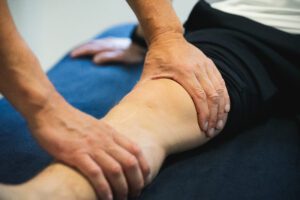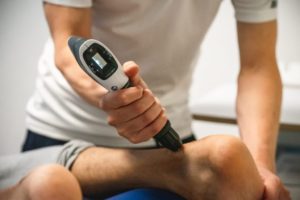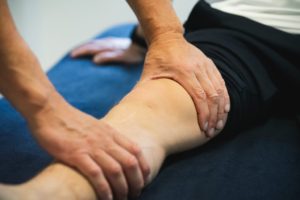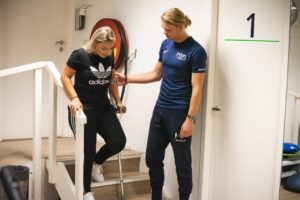Plantar fasciitis
If the attachment of the tendon plate to the heel becomes inflamed, this is called plantar fasciitis. This is an overuse injury. The terms plantar fasciitis (or plantar fasciopathy) and heel spurs are often confused.
What are the symptoms of plantar fasciitis?
The following symptoms may indicate plantar fasciitis:
- Pain under the heel at the attachment of the tendon plate
- Pressing on the attachment of the tendon plate is painful
- The pain increases with prolonged standing and walking
- Pain under the heel after sitting still (starting pain)
- Stiffness under the heel after getting up in the morning, which goes away after a while
pulls - The complaints often increase after exertion and strain
What are the causes of heel pain?
The cause of the complaints can differ per person. In runners, the cause is often an increase in training intensity or size.
What treatments are there for heel pain?
There are nineteen(!) different treatment options for plantar fasciitis. Not all of these have been proven effective. The treatments that currently work best are:
Dosing the load
By reducing the activities that bother you more, the complaints will decrease. You can then start building up the load again in a measured manner.
An exercise program
By strengthening the tendon plate and foot muscles, the complaints slowly decrease.
Taping
By firmly taping the foot, the pressure on the heel is reduced. This is done with a 'low dye' technique.
Shockwave therapy
This is done with a shockwave device, which generates pressure waves that have a beneficial effect on tissue recovery. If the complaints are difficult to resolve and last a long time, shockwave therapy can promote recovery. This must be combined with the above treatments.
Dry needling
The treatment is based on treating trigger points (painful points in the muscles) with acupuncture needles. With plantar fasciitis, these trigger points will mainly be in the calf muscles. Dry needling treatment can reduce the complaints.
Advice from physiotherapist?
Do you suffer from heel or heel pain? Don't continue with it for too long! Then it is often more difficult for you to get rid of it. Contact a physiotherapist for a proper diagnosis and treatment.
Written by Ruben Vrielink,
Sports physiotherapist at Physiotherapy Iburg
Source: Sports care
Source: Sports medical networks











